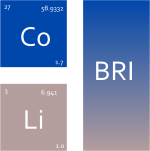CoLiBRI - Cobalt and Lithium speciation, toxicity, and Bacterial community Regulations at the sediment-water-Interface
About this project
Project information
Project status
In progress 2023 - 2025
Contact
Research subject
Research environments

In the EU, transport is responsible for a quarter of greenhouse gas emissions. For the transition to a climate neutral economy, battery development and production strategies are therefore of high importance. By 2030, the EU expects an increased requirement of 18 times more lithium and 5 times more cobalt in comparison to 2020. These elements are released into the aquatic environment by mining processes and wastewater discharge. In aquatic systems, sediments are important and dynamic sinks or sources for such elements, depending on varying environmental conditions. The chemical state, bioavailability, and toxicity of these elements in aquatic systems are highly influenced by environmental parameters such as pH and temperature, which in turn are influenced by climate change.
The goal is to investigate the toxicity of lithium and cobalt in aquatic systems under different environmental conditions. This will be addressed in 3 research objectives:
1) Investigation of the impact of temperature and pH on the distribution and chemical characteristics of lithium and cobalt within aquatic systems
2) Analysis of toxic effects of lithium and cobalt to zebrafish
3) Evaluation of lithium and cobalt related microbial community changes within the sediment
To address these objectives, we perform experiments using sediments spiked with lithium and cobalt in a microcosm system capable of monitoring and regulating different water parameters. Several methods are applied in this project to reach these goals. Metal quantification and bioaccumulation tests are performed and assessed using HPLC-AES and ICP-MS. We use metagenome fingerprinting, gene expression analyses and toxicity tests using zebrafish as a model organism to assess changes in sediment microbial communities and toxic effects. With this interdisciplinary holistic approach we aim to improve environmental risk assessment of sediments contaminated with lithium and cobalt, particularly in regard to climate change.

